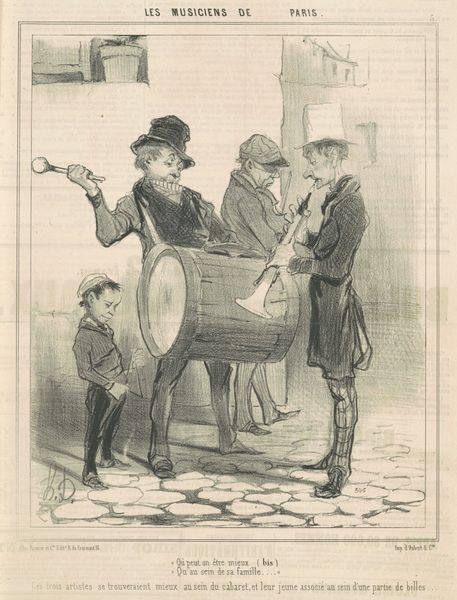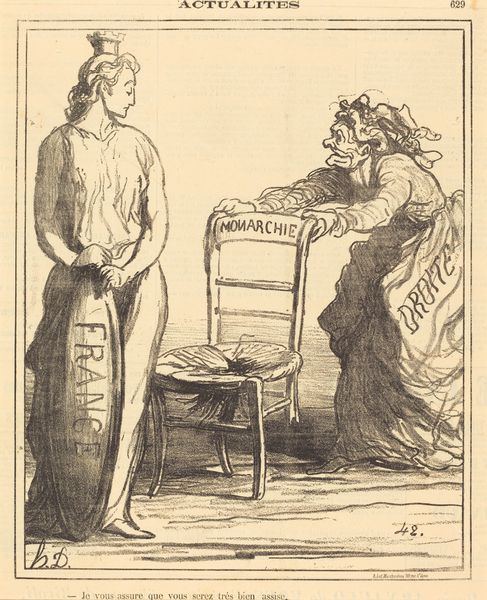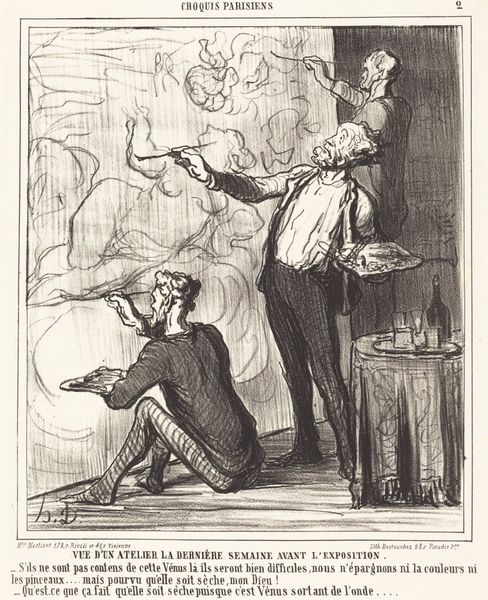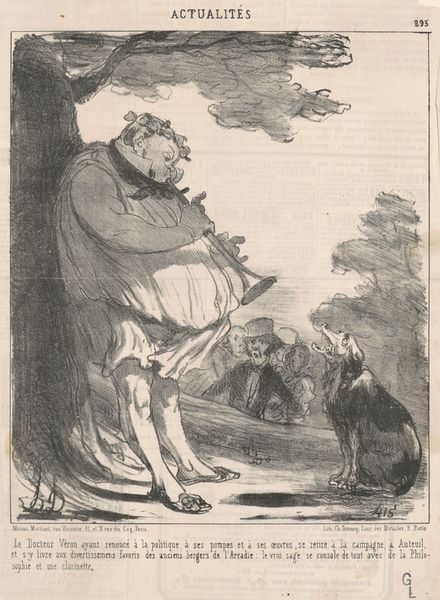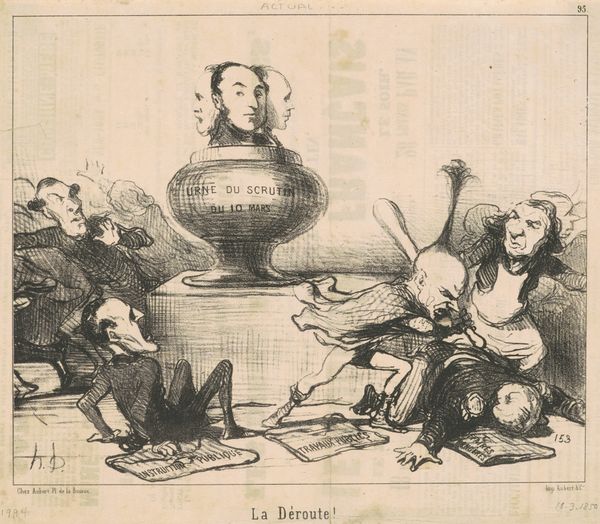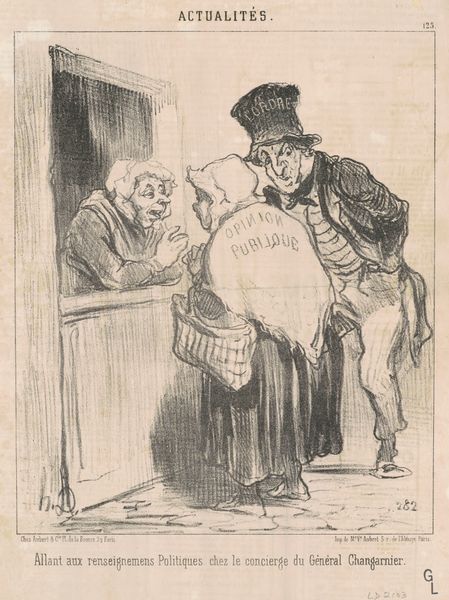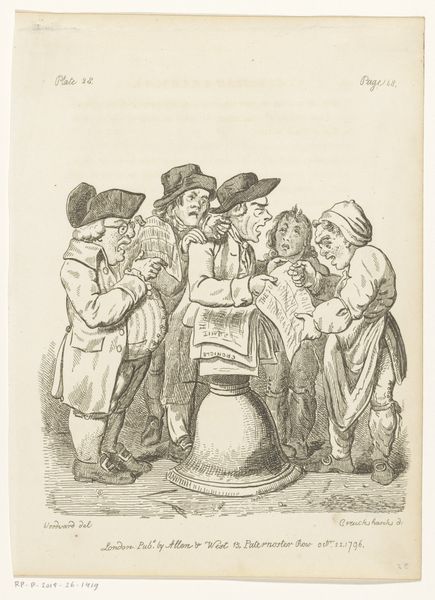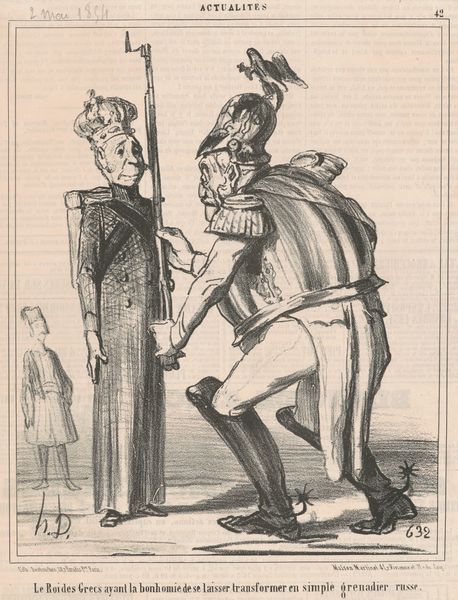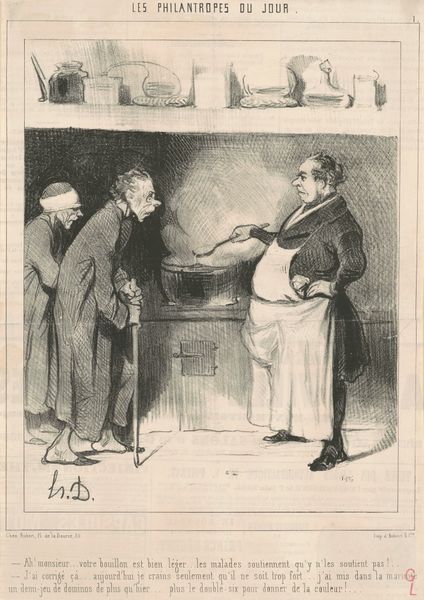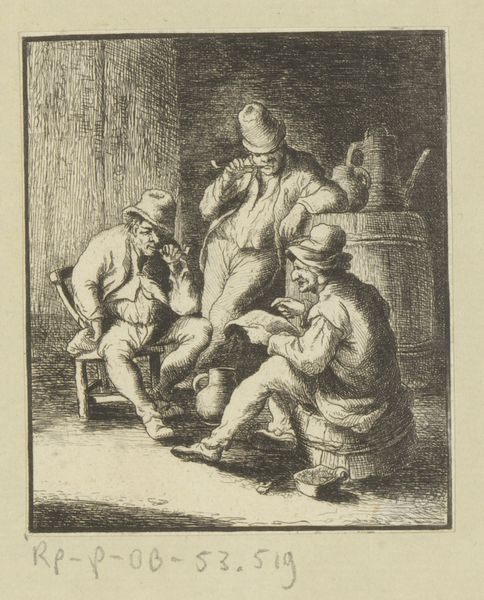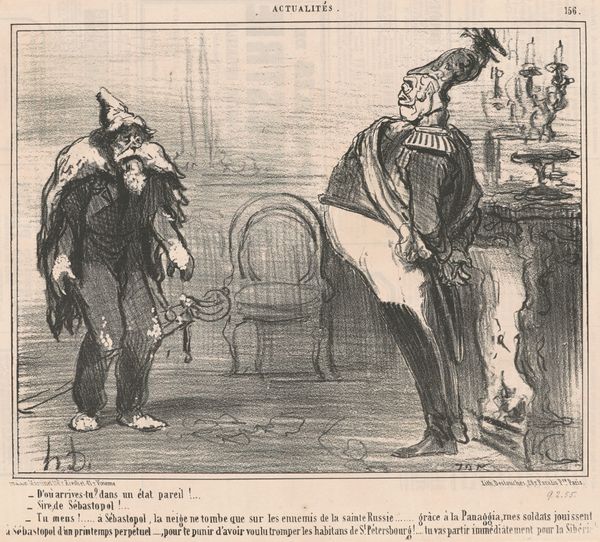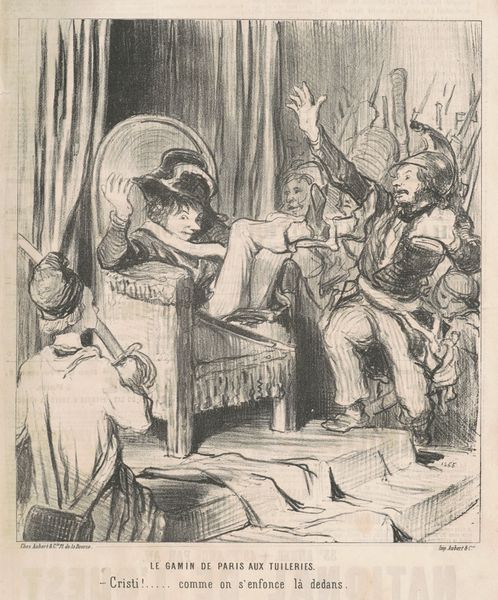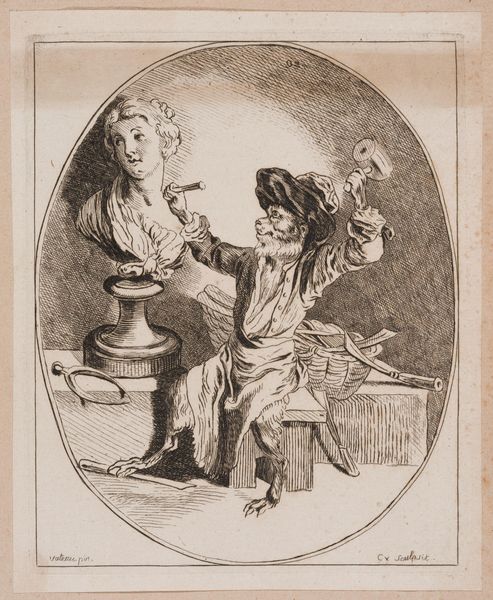
drawing, lithograph, print, graphite
#
portrait
#
drawing
#
lithograph
# print
#
caricature
#
pencil drawing
#
graphite
#
portrait drawing
#
genre-painting
Copyright: National Gallery of Art: CC0 1.0
Curator: "Dis donc, Macaire, qu'é que c'est que c'thé..." a lithograph by Honoré Daumier from around the 19th century. The strong lines create a rather cynical tone, don't you think? I wonder, how does the formal structure contribute to this effect? Editor: Yes, it’s definitely striking. The exaggerated features of the figures really jump out. What compositional elements did Daumier employ to emphasize their caricatured appearances? Curator: Observe how Daumier uses stark contrasts in shading to define the figures, almost to the point of grotesque exaggeration. This heightened contrast, devoid of gentle gradations, emphasizes form and texture, revealing a certain coarseness. It reduces them, visually and perhaps metaphorically, to basic, almost base elements. Editor: It’s interesting that you mention that – coarseness. It’s there in the style, definitely, but what about the texture created through the lithographic process? Does it enhance or detract from that feeling? Curator: The very materiality of the lithograph is important here. The medium lends itself to sharp, distinct lines, perfectly suited to caricature. Consider also the composition: the figures are cramped within the frame, heightening the tension and discomfort for the viewer. The subject's attire adds another layer of interest. Note the juxtaposition of class as defined by what they are wearing. Editor: The clothing is intriguing. And how the artist manipulates darkness. How can we interpret the expressive qualities that the high-contrast style of a print imparts? Curator: We might argue that this strategic distribution underscores thematic concerns with corruption and inequality so often found in his satirical works. What do you think? Editor: Absolutely. Analyzing those formal elements helps us understand Daumier’s commentary so much better. I am also much more aware now of the expressiveness inherent in lithography itself. Curator: Indeed, by looking closely at line, form, and composition, we unlock a deeper understanding of the artwork's meaning and its socio-political implications.
Comments
No comments
Be the first to comment and join the conversation on the ultimate creative platform.
